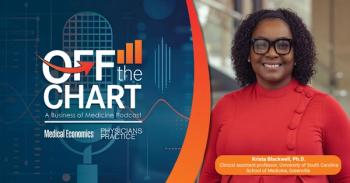
Machine Learning in healthcare: A physician’s perspective
Clinicians must assume business leadership roles to create a better patient-centered health future.
In the early 1980s, I owned one of the first
Many ideas come and go, but the Commodore 64 launched a data tech revolution that continues to this day. Not only did it sit at the crossroads of utility and market, it completely changed the way we thought about computers and all that followed. In just a few decades, computing has transformed virtually every aspect of our lives, fueling-among other things-the data revolution that is shaping the next step in the evolution of healthcare.
Trending:
The “Commodore of Health”
A key catalyst for healthcare data occurred with the 2009 introduction of the
Once the data became electronic, it began to take on a life of its own. “Big Data” promised to change the way medical care was delivered. A new mechanism to store and analyze these data was needed, and the “Commodore of Health” was born. With Big Data, the traditional “reactive care” of individual physician-patient encounters driven by symptoms began to give way to proactive care-finding key problems to focus on in a timely and effective manner to improve patient outcomes. This idea fueled the growth of clinical analytics, analyzing all that medical data to generate insights and ultimately make better clinical and financial decisions.
At a Crossroads
Since the passing of the HITECH Act, however, an interesting problem has developed: Big Data has become too big to tackle with the usual clinical analytics approaches. There is just too much of everything-too many claims, too much granular clinical data, and a flood of new data from new imaging and wearable devices which cannot be analyzed via traditional methods.
Cyberpunk author William Gibson once said, “The future is already here–it’s just not evenly distributed.” While many organizations, mainly early adopters, have benefited from insights generated from clinical analytics, the approach hasn’t reached all corners of healthcare. Even where it has been adopted, implementation remains uneven. This challenge is now being addressed by yet another technology, powered by even more capable computing systems-Machine Learning (ML). We are beginning to see the answers and they are fascinating.
Read More:
If clinical analytics enabled us to find trends and problems at scale, machine learning can identify those trends that humans cannot even see. While clinical analytics can predict the likelihood of readmissions and provide a list of potential returning patients, machine learning can make these predictions faster and more accurately, while also suggesting the next clinical action and identifying the best approach to encourage patients to adhere the recommendations. In the first example, ML augments clinical ability. In the second, it sifts through the data to make it easier for the clinician to pursue the best course of action in the most effective way possible. It’s an optimization function applied to the entire care process.
Physicians as ML Leaders
As physicians encounter ML technologies in clinical medicine, we must demand proof of their performance and value. As providers, we are entrusted to do their utmost for our patients’ wellbeing or to at least do no harm.
It is incumbent upon ML innovators to thoroughly validate and study their products in actual care settings. As physicians, we must demand the same level of evidence for the efficacy of ML-derived technologies we would for any other tool employed in clinical practice. While time consuming and expensive for all parties, it is the only way to ensure we are getting it right.
Demanding clinical evidence is just one way that physicians can support the integration of ML technologies into practice. We must also insist that adoption occurs in a deliberate and thoughtful manner that benefits both us and our patients. While the innovator is tasked with making the technology easy to use, the clinician must shape its role in actual use. The clinician must combine the machine-derived insights with their own clinical intuition and learn to trust what the machine advises, without losing the irreplaceable human touch as they formulate the ultimate plan for a patient.
Looking Forward
Success of ML in healthcare cannot ride on the backs of data technologists alone. To realize the true benefits of AI and machine learning in healthcare and create a better patient-centered health future, clinicians and physicians must increasingly adopt business leadership roles to champion, integrate, and overcome the challenges of implementation.
The drive to overcome integration issues (aligning medicine with improved care and reduced cost) is deeply rooted in our organizational cultures and operations. The ability to integrate and embrace the "AI mindset" is symbolic of organizations that are aligning their systems around the patient - with electronic medical records, team-based medicine and valued-based care approaches.
Related:
In the not-too-distant future, we will look back on how ML empowered the next step in the evolution of healthcare. Will physicians like what they see and how it affects their work and the health of their patients? The time for them to make their own future is now.
Dr. Orr is the CEO and CMO of Medial
Newsletter
Optimize your practice with the Physicians Practice newsletter, offering management pearls, leadership tips, and business strategies tailored for practice administrators and physicians of any specialty.








